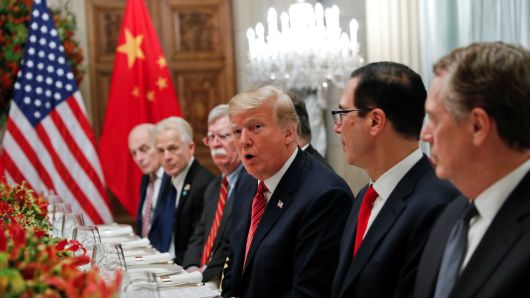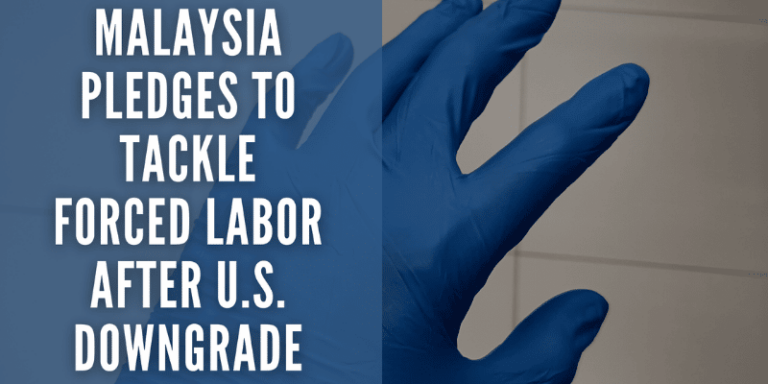Is Trade Compliance the Lone Ranger?
Is Trade Compliance the Lone Ranger?
There are companies, surely not yours, where various departments are viewed as spokes around the hub of the trade compliance department. Each department operates as if trade compliance is accomplished “out there somewhere” rather than taking an active part in making sure the company meets its import and/or export regulatory obligations. But no one person or department is a hero; there is no Lone Ranger in trade compliance. Companies, instead, should view themselves as a network of closely linked employees and departments, all working together to create a trade compliance program that propels the company into successful and profitable trade relationships. [/vc_column_text][vc_column_text css_animation=”none”]In today’s global marketplace, a trade compliance program is essential to long-term success. In order to maintain a competitive edge, businesses must ensure that they thoroughly understand which laws and regulations govern their imports and exports. Failing to do so can have dire consequences such as seized shipments, substantial monetary fines, denial of licenses or approval, and even jail time for violators. In some cases, the U.S. government has even debarred companies from exporting any of their products, ultimately driving them out of business.
To be successful, remain competitive, and avoid penalties and fines, companies must
- Develop and maintain effective supply chains
- Manage risk and security at your facility and within the supply chain
- Determine and adhere to export and import legislative requirements
- Train and educate all employees within the organization from corporate executives to custodial engineers
- Provide and maintain accurate and complete documentation
- Properly classify merchandise
- Determine the proper origin of goods
- Accurately assess the value of goods
- Pay appropriate duties and taxes
Employees must also be good corporate citizens; If they fail to meet import/export requirements, it is a violation of control measures that have been put in place to protect national security, the economy, the environment, and the health and well-being of our citizens.
The tone of an organization is set by its corporate executives. They work to develop a trade compliance program, empower employees with direct responsibility for trade compliance, and encourage other employees to cooperate: Accounting, Procurement, Sales & Customer Service, Human Resources, IT, Manufacturing, and Shipping and Receiving.
Trade compliance must start with a solid understanding of the import/export landscape. A culture must be created where everyone understands and recognizes the importance of trade compliance. It demands that companies implement procedures for meeting and abiding by all Federal regulations.
One way in which the United States protects national security is by prohibiting certain goods from being exported to other countries and individuals who may wish to do us harm. The government depends upon international trade compliance programs to enforce these regulations and can levy huge fines and fees for violations.
For example:
- In 2013, the Texas-based company, Weatherford International, was ordered to pay USD $100 million in fines as a result of exporting oil and gas equipment to Iran, Syria, and Cuba. Weatherford International was found to be in violation of the Export Administration Regulations (EAR) and the Iranian Transactions and Sanctions Regulations (ITSR). They were struck with one of the largest civil penalties ever levied by the U.S. Commerce Department’s Bureau of Industry and Security, and Weatherford ultimately agreed to pay $253 million to settle the alleged violations.
- In 2017, a $965 million penalty was issued to a multinational telecommunications company headquartered in Sweden, Telia AB, and its Uzbek subsidiary, Coscom LLC, following a scheme to pay bribes in Uzbekistan. These combined criminal and civil penalties stand as an example of one of the largest corporate bribery and corruption resolutions ever administered by the United States Department of Justice.
Most companies could not absorb such a major blow to their finances, operations, and reputation; however, many acts of noncompliance are not deliberate, but rather a result of poor training, costs, and complacency, and while most companies’ trade compliance failures and penalties may not result in fines of nearly a billion, they can still have disastrous consequences for businesses.
Fortunately, noncompliance is completely avoidable, and well–executed management strategies can prevent trade compliance issues from negatively impacting businesses. [/vc_column_text][vc_single_image image=”77124″ img_size=”full”][vc_column_text css_animation=”none”]
Here are three ways your company can ensure it is following best practices.
Is Your Company Informed and Trained?
Effective trade compliance procedures protect companies and countries from potential dangerby, very simply, correctly classifying goods in accordance with the applicable laws and regulations; declaring the value of such goods and paying any duties; and screening new employees, vendors, etc. In order to adhere to regulations, a company’s network of stakeholders should have an understanding of their role in trade compliance within an organization as well as the consequences associated with their responsibilities. Employees should be thoroughly trained to know and understand compliance regulations and maintain detailed records of all import/export transactions so that issues can be readily identified at any point.
Are You Focusing on the Big Picture?
Even with a network of employees cognizant of their trade compliance responsibilities, but especially if each department is operating as a Lone Ranger, it is easy to get stuck on the individual components that contribute to the overall program rather than asking the more central question: “Are we trade compliant?” While it is important to address the individual aspects of trade regulations, keeping the bigger picture in mind can help companies ensure that nothing gets missed.
One way to accomplish this is to explore questions that employees may have about a specific aspect or requirement of trade compliance, e.g., an ECCN or HTS code. In addition to providing the answers, time should be taken to ensure that they don’t have any other questions or missing information and to identify whether there are any larger issues at stake.
Are You Staying Ahead of the Game?
Trade compliance is a moving target. All employees involved in trade compliance must be aware of new and changing regulations. The strategies that worked for your company ten years ago may no longer be effective. The global marketplace can change abruptly, and it is paramount to continually monitor regulatory and legal changes in every country where a company operates.
If a company has plans to expand its business into a new country or region, much research should be done before commencing trade; many companies expand without a deep understanding of the challenges they may encounter which could be a common cause of noncompliance issues such as incorrect classification codes and valuations. This poses a great financial risk for businesses and can impact their success in a new region as mishaps can result in seized shipments and bans from doing further business in that particular country.
Conclusion
Trade compliance is such a vital part of the success of international businesses, so rather than viewing trade compliance as a company under siege and in need of a hero, a veritable Lone Ranger to come to its rescue, try to look at its employees as heroes. It is in everyone’s interest in the international business community to comply with U.S. rules and regulations, and it is everyone’s responsibility.
Please view our video on “Why Trade Compliance.” [icon name=”play-circle” class=”” unprefixed_class=””][/vc_column_text][/vc_column][/vc_row][vc_row][vc_column][vc_cta h2=”Online Training on Import & Export Customs Rules & Regulations”]
How does a webinar work?
Our webinar training is live and interactive. You may ask questions throughout the class (not just at the end of class). Our interactive webinars are NOT pre-recorded. Our instructors follow the same agenda as our walk-in seminars. You will connect to the class via the internet using WebEx. A link is emailed to you for connecting. You will see the instructor’s presentation on your computer screen. For more details visit our Interactive Webinar Training page.
See Online Training Events Schedule [icon name=”arrow-circle-right” class=”” unprefixed_class=””]







